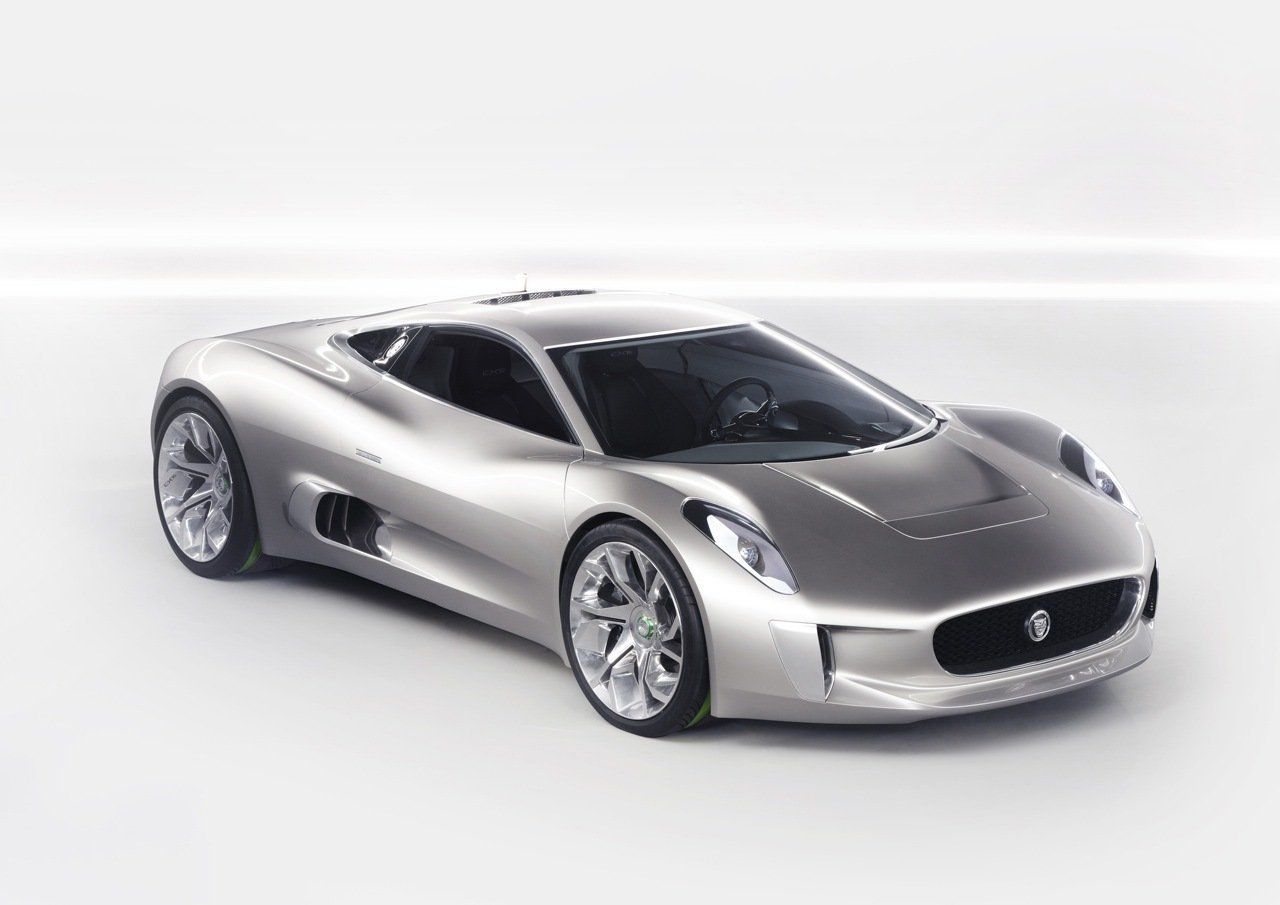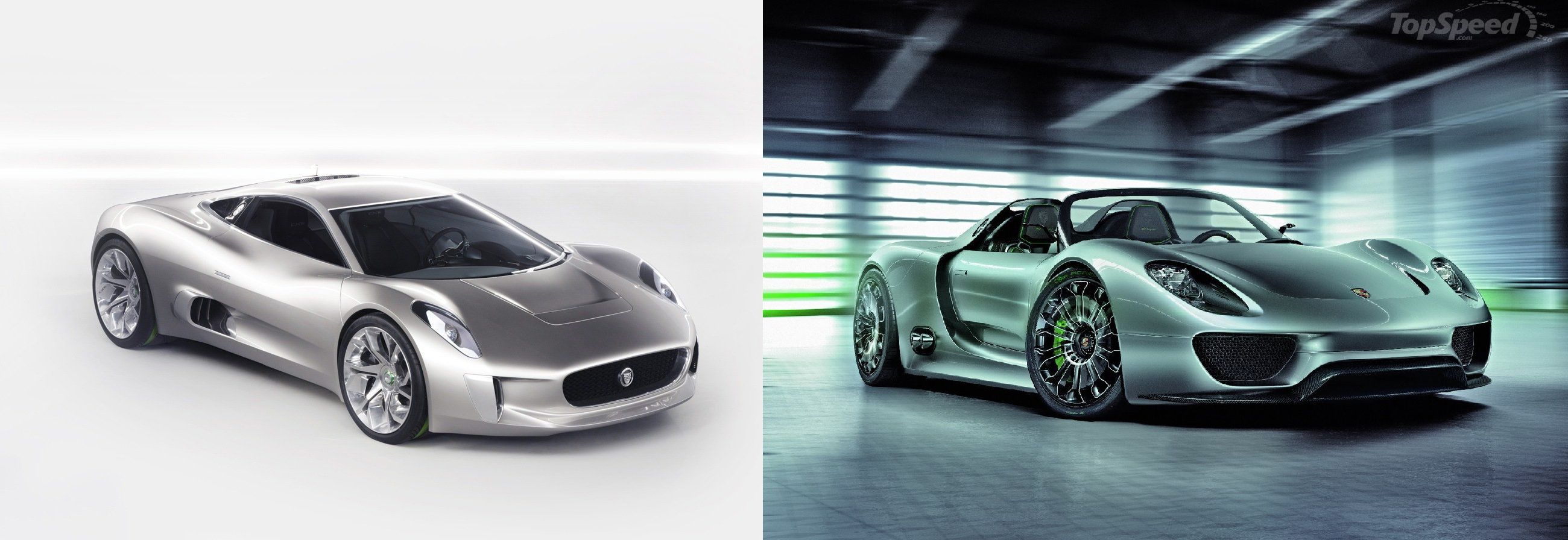Jaguar unveiled the C-X75 Concept car at the 2010 Paris Auto Show to show everyone that they had plenty of potential left to uncover as an automaker. And, although the concept was a huge success and served its purpose, Jaguar->ke39 still needed to prove that this potential prevailed in more than just a design study. Now, under Tata’s influential arm, Jaguar is looking into building "a more accessible variation of the C-X75 concept" and will do so sometime between 2013 and 2015 with 250 units of the crazy cool production version of the C-X75. The production model will be sport-based and will be built in conjunction with the Williams F1 team.
“We were always determined that the Jaguar C-X75->ke3681 would be as striking on the road as it was in concept form,” said Ian Callum, Director of Design, Jaguar Cars. “This will be the finest looking and most innovative Jaguar ever produced. Even in the world of supercars, we can still produce the most beautiful.”
The production C-X75 will still carry the four electric motors attached one to each axle, but the oh-so-cool jets mounted on the concept will be taken out and replaced with a supercharged 1.6L gasoline engine. Yes, we know the jets would have been awesome to see in a production model, but the specs for the C-X75 won't disappoint anyone. Plus, we may still get to see the jets in a later production version since Tata->ke3001 owns a big stake in Bladon Jets. For now, we'll stick to the phenomenal elements of the future C-X75.
UPDATE 07/25/2012: At a press gathering at Jaguar’s test facility in Gaydon, England in July 2012, the company announced that the production version C-X75->ke3681 would be like no other supercar. Its four-cylinder engine will feature a displacement of just 1.6 liter, but the output will go up to an impressive 500 HP at an amazing 10,000 rpm. In order to develop such an amazing output, the engine will be equipped with direct fuel injection, supercharging, and turbocharging.
The engine will be mated to a seven-speed single clutch transmission and will either send its power to the rear wheels, or will generate power for the lithium-ion battery pack. The supercar will offer two driving modes: all-electric and hybrid. In electric mode, it will deliver an autonomy of 37 miles and in hybrid mode, it will go from 0 to 60 mph in just 3 seconds and up to a top speed of 200 mph.
Hit the jump for the full details on the Jaguar C-X75.
2014 Jaguar CX75
- Make: Array
- Model: 2014 Jaguar CX75
- Engine/Motor: inline-4
- Horsepower: 500
- [do not use] Vehicle Model: Array
Exterior and Interior
Most, if not all, of the exterior elements found on the concept C-X75 will remain the same, but Jaguar has enlisted the help of the Williams F1 team for many components of the production model. Using their vast knowledge, the F1 team will be helping Jaguar with the development of the carbon fiber and other composite materials used for the chassis and body and an improvement in aerodynamics of the 2,976 lb sports car.
Jaguar believes that a direct technology transfer between elite motorsport and road-going production cars is essential for the C-X75 to be as successful as it should be and the lightweight, rigidly strong structure of the production model attests to that.
Many people may not know this, but the future C-X75 was actually inspired by the XJ13, a prototype racing car developed by Jaguar to challenge everyone else at LeMans in the mid 1960's. The XJ13 never actually participated in a race and only one unit was ever built, but the design was just enough to impress.
Engineers did come across a few problems when modifying the concept to production form. The Williams F1 team had to do some extensive aerodynamic work on the body of the vehicle to make sure it could produce enough downforce to travel upside down at 120 mph. The engineers calculated that the C-X75 needed 1.562 square meters of air intake - much more than the car’s front end had. These aerodynamic requirements changed the design a little, says Jaguar’s global brand director Adrian Hallmark, with the C-X75 "looking more like a sculpture than a car, and more beautiful."
British company, Alfred Dunhill, ltd., has created an exclusive video which explains the exclusive connection between the C-X75 and the legendary XJ13 prototype.
Engine
Sorry, folks, but the jet engines that came with the C-X75 Concept will be shown the door in the production model, in favor of a supercharged 1.6L gasoline engine designed in conjunction with the Williams F1 team. This engine will share the spotlight with the same four electric motors (one for each axle) seen in the concept. The Williams F1 team will also help with the development of the vehicle's hybrid propulsion system. The hybrid super car will be able to get 99g/km of C02 which should make the environmentalists in the world a tad less angry at the speed hungry car enthusiasts.
“The engine’s compact size allows it to be mounted low in the car for optimum weight distribution and to retain the concept’s stunning silhouette. This will make the Jaguar C-X75 a bona fide hybrid supercar capable of silent electric running with an extensive EV range in excess of 50km,” explained Bob Joyce, Group Engineering Director, Jaguar Land Rover.
At a press gathering at Jaguar’s test facility in Gaydon, England in July 2012, the company announced that the production version C-X75->ke3681 would be like no other supercar. Its four-cylinder engine will feature a displacement of just 1.6 liter, but the output will go up to an impressive 500 HP at an amazing 10,000 rpm. In order to develop such an amazing output, the engine will be equipped with direct fuel injection, supercharging, and turbocharging.
The engine will be mated to a seven-speed single clutch transmission and will either send its power to the rear wheels, or will generate power for the lithium-ion battery pack. The supercar will offer two driving modes: all-electric and hybrid. In electric mode, it will deliver an autonomy of 37 miles and in hybrid mode, it will go from 0 to 60 mph in just 3 seconds and up to a top speed of 200 mph.
Another bonus is that it seems the supercar will be offered in both left and right-hand-drive versions, meaning that it will be available in markets all over the world.
Pricing
The Jaguar C-X75 should arrive sometime between 2013 and 2015. Only 250 units will be built and each will be priced between 700,000 and 900,000 Euros, or about $1 million and $1.3 million at the current rates.
Competition
Our hearts skipped a beat with the official confirmation of the C-X75, but Porsche->ke1 may not be too thrilled at the thought of a strong competitor for their 918 Spyder hitting the market shortly after its release. The Porsche 918 Spyder Concept was powered by a 500 HP V8, along with a pair of electric motors with 109 horsepower each, but the production version is said to be getting a power boost. This boost will be necessary if it hopes to compete with the C-X75's minimum output of 800 HP.
Porsche can rest easy with pricing at this point because their production model is said to begin at $845,000, but locating a Porsche dealer that is actually approved to carry the 918 Spyder may be a difficult task. The 918 Spyder will be built only when a customer has purchased one and the task of a dealership getting approved may prove rather tedious. Let's see how Jaguar handles production of their expensive super car.
“Never before has the company launched such an ambitious, world-beating vehicle program,” said Carl-Peter Forster, CEO Tata Motors. “This is the Jaguar of the future. The opportunity for innovation like this in the UK is part of the reason Tata Motors invested in Jaguar, and it’s fantastic that products like the C-X75 can become reality.”



